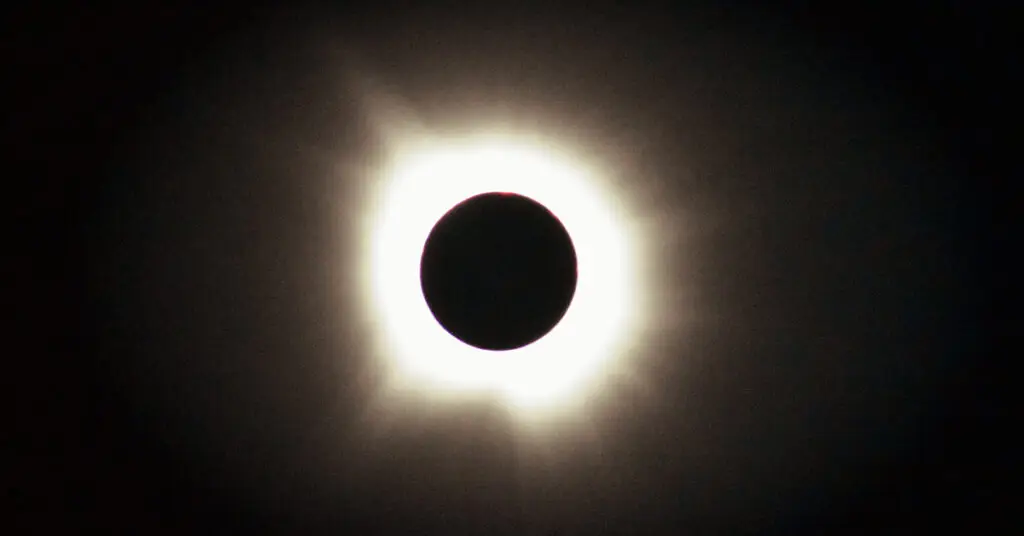
The total solar eclipse of April 8, 2024, was a breathtaking and once-in-a-lifetime experience. It darkened the sky for nearly four minutes over Dallas, TX — the only major metropolitan city in the United States in the average 115-mile-wide (185 km) path of totality. The last time the city was in the path of totality was in 1878, a staggering 146 years ago, and it won’t happen again until 2317, a very distant 293 years from now. This rarity and significance added to the awe and wonder of the event, making it a truly unforgettable experience.
In the days leading up to the total solar eclipse, the weather became a deciding factor in whether it would be visible over our state. Our morning started cloudy, with a storm system forecast to enter our area within an hour or two after the conclusion of the eclipse. The numerous out-of-state (and international) nervous tourists on their way kept crossing their fingers, hoping it would not be a disappointing trip. Hourly, the clouds kept getting thicker, thinner, and sometimes vanishing altogether. We went from excitement to sadness, from hope to edginess.
Though we did not have a clear sky, the minutes of totality were still visible: I managed to capture the lead-in photo to this post, a snapshot of the extraordinary moment of totality. I didn’t have time to set up elaborate equipment, so I took the shot on the fly, without a tripod, using my Nikon 5600 camera. I used a lens with a 100mm focal length, a shutter speed of 1/125s, an aperture of 4.8, and a sensitivity of ISO 900. I think it turned out well, considering the clouds were moving. The second photo below was taken with a different lens, one with a 300mm focal length, an aperture of 6.3, and a shutter speed of 1/400s, and once again, no exposure compensation was used.

I did not take many photographs; I enjoyed the moment and took it in completely. The moment totality occurred, the sky turned to late dusk lighting, with Venus and Jupiter clearly visible, along with many other stars. Our surroundings were bathed in a surreal light: dark yet brilliant. We heard no animal sounds, nor did we observe strange behavior from them — they seemed just as bewildered as we were, living those few minutes in stillness and absolute amazement. There are no words descriptive enough to convey the neural and visual sensations, such as the skin’s reaction to the noticeable temperature drop of nearly ten degrees or the startling fast adaptation of the retina to light/dark/light in such a natural setting (as opposed to artificial), or the “shimmering” light on foliage, waterway, and pavement.
An hour before totality and for the following hour and a half, I hosted a livestream on Instagram, a virtual window into our awe-inspiring reality for all those who were not in the path or even close to being able to see the solar eclipse. I knew that a smartphone camera (especially in video mode), though good, still would not be able to fully capture the splendor of what we were witnessing. Thank you to all those who joined. I did not have a chance to welcome viewers at the time, but your presence was felt and appreciated. I knew there would be a flood of professional photographs and videos on the web and social media afterward – it was not about the quality my equipment could provide but about sharing the unique experience. I wanted to share the anticipation, the hushed excitement, the collective gasp as the moon’s shadow swept over us, and the shared wonder as we gazed at the darkened sun.
Experiencing the total solar eclipse in person was one of the best moments of my life. The emotions and sensations I felt are impossible to describe with the depth necessary to do the event justice. They will be with us literally forever.

What a wonderful experience and thank you for making it possible for us to share this magical moment 🙏